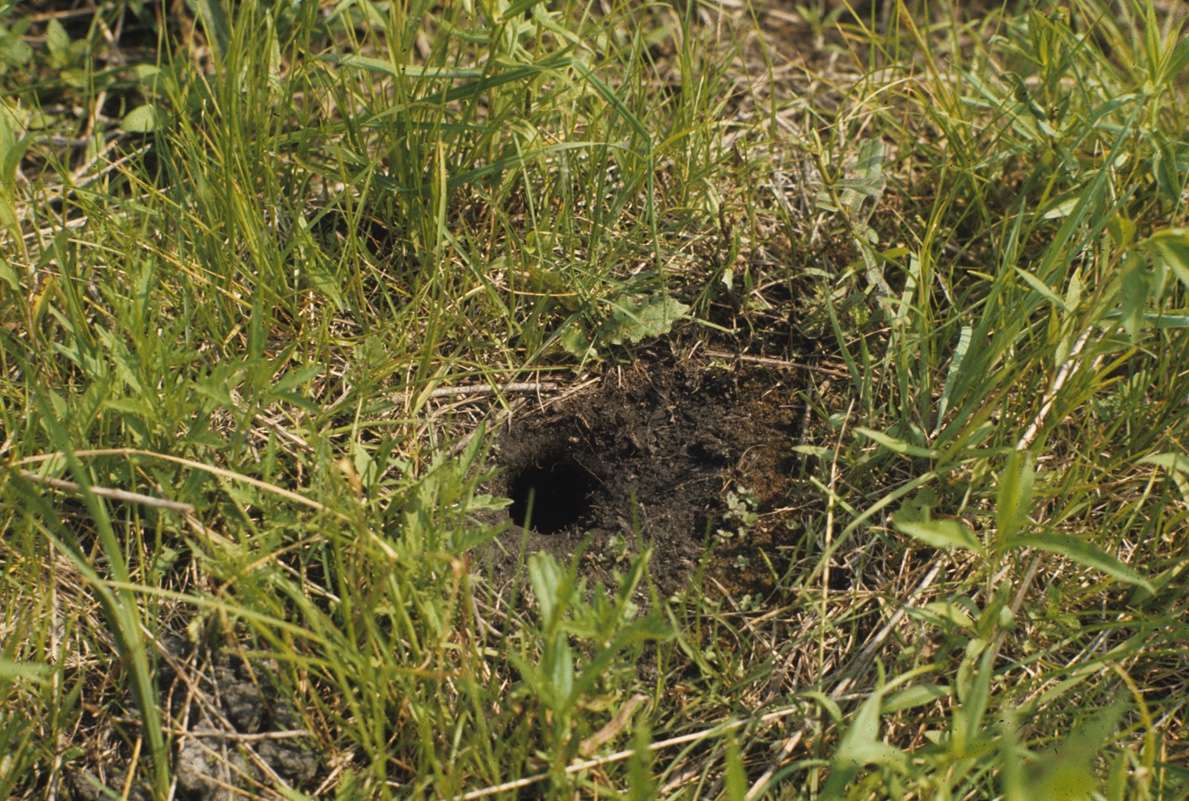The size of a burrow hole and any tracks you find can help you to identify what species is using a burrow.
The surrounding habitat can provide excellent clues at to what kind of animal is using a burrow. Flatter ground with minimal woody vegetation is attractive to voles, moles, gophers, chipmunks, and thirteen-lined ground squirrels. Areas with uneven ground structure, such as roadsides, ditches and rock piles, are favored by woodchucks, skunks, opossums, weasels, badgers, foxes, and coyotes. The shorelines of rivers, lakes, or ponds provide habitat for mink, beaver, muskrat, and river otter.
Burrow size can also be a helpful clue. The burrow sizes listed below are typical, but keep in mind that burrow sizes vary depending on soil type and other environmental conditions important to the ecology of each species.
Small holes less than two inches in diameter are often used by snakes, voles, rats, thirteen-lined ground squirrels, least weasels, Franklin’s ground squirrels, or lemmings. There is usually not much extra soil around the opening of these holes. If you don’t see the animal, look for tracks or the presence of other signs, like vole runways, to help identify which species is using the hole(s).
Mole burrows are found beneath and in the center of a molehill. A pocket gopher burrow entrance is off-center and nearer one edge of the excavated soil mound, giving the burrow hole a kidney-shaped look.
With burrows of this size it can be hard to determine which species is using the burrow. Look for the animal or its tracks to confirm what animal is using the site. Long-tailed weasels, muskrats, skunks, foxes, and opossums will use burrows this size. Weasel and muskrat burrows tend to be near water.
For large holes, the likely occupants of the burrow are woodchucks, coyotes, or badgers.

Photo: Willowbrook Wildlife Center
The Wildlife Illinois website was authorized by the Illinois Department of Natural Resources (IDNR) in partial fulfillment of project W-147-T. The website was developed by the National Great Rivers Research and Education Center, 2wav, and the IDNR in partnership with the United States Department of Agriculture Animal and Plant Health Inspection Service Wildlife Services and University of Illinois Extension to provide research-based information about how to coexist with Illinois wildlife.